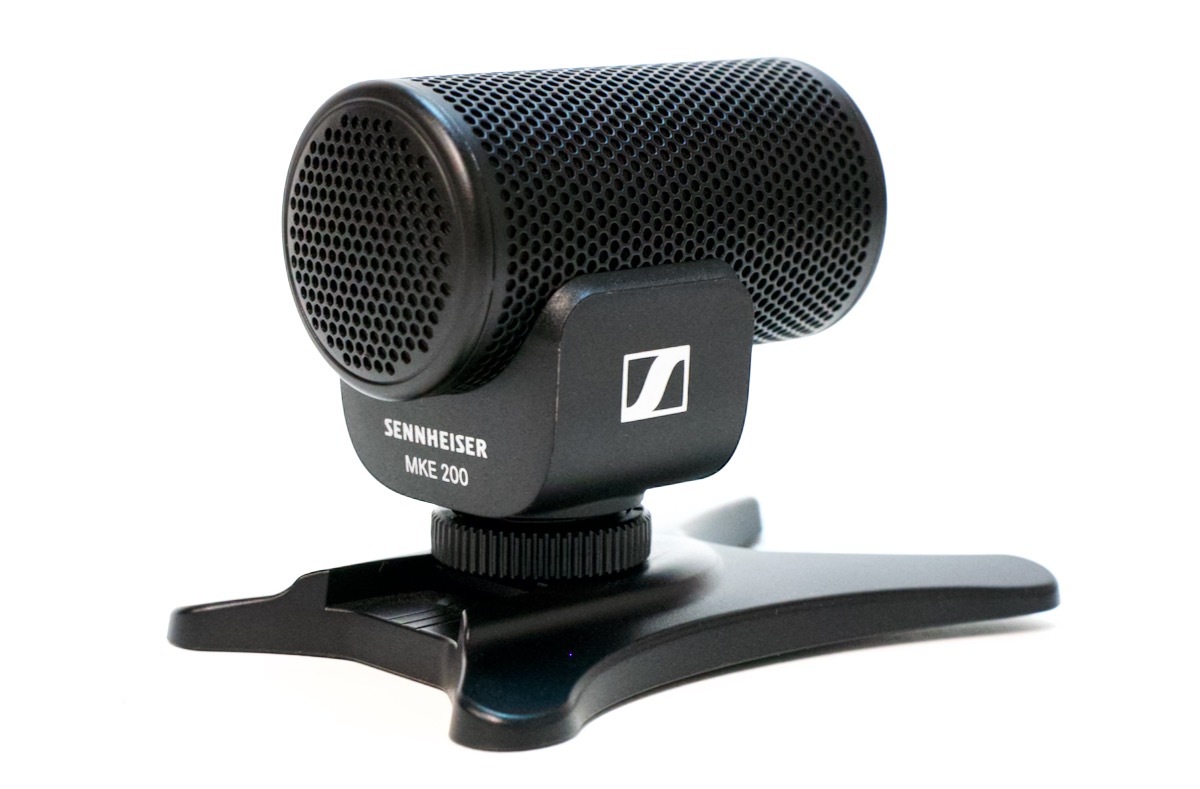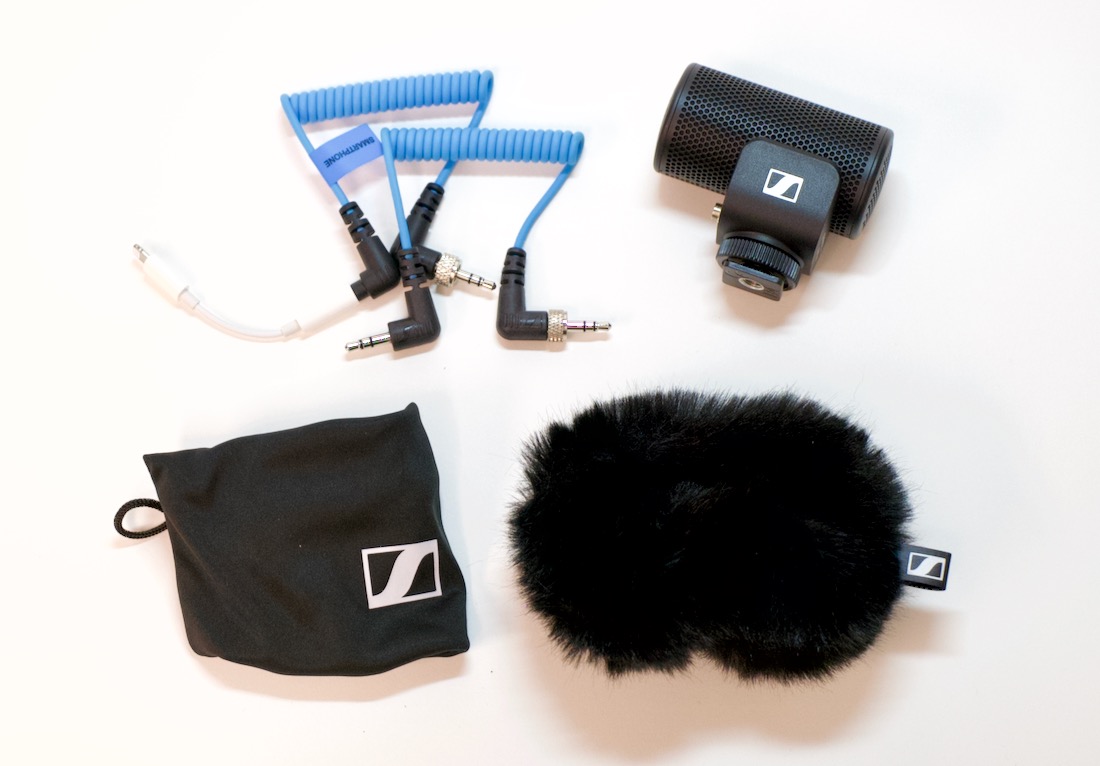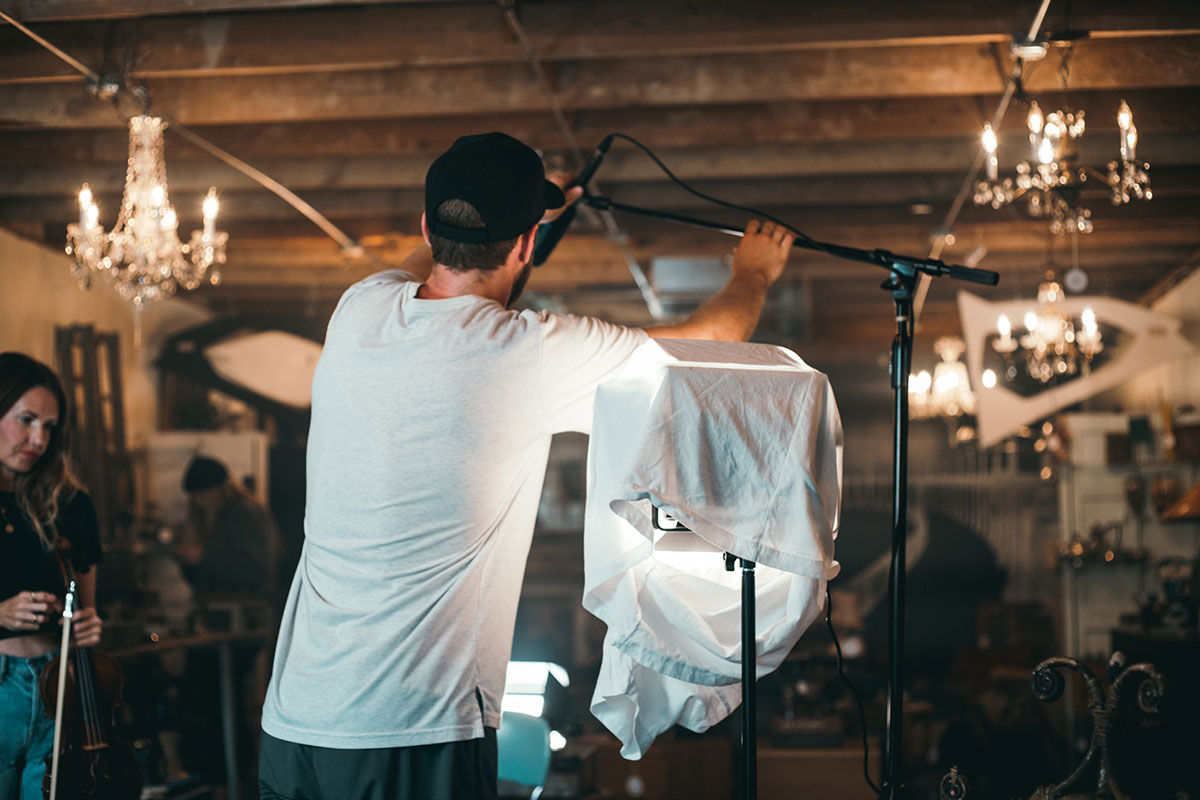
The Sennheiser MKE 200 is a compact shotgun microphone, and it's a small and cheap way to improve the sound you get for vlogging, or b-roll footage over the built in mic on your camera or phone.
I bought this microphone for use making my YouTube videos, and I'm not getting any compensation for this review. I just wanted to see if it would be a good 'run and gun' mic for some of my work, and to share my thoughts here.
After using it for a few weeks, I'm happy with the mic, but it didn't blow me away.
There are three things to consider with the MKE 200: size, price, and performance.
I hope you're most interested because of the size and price. I hate to be the bearer of bad news, but if you're main interest is performance, you'll need to increase your budget and the size of your equipment carrying case—and maybe hire a boom operator!
Microphones and physics
Why is that?
Because microphones have to deal with the basic laws of physics. Any time you want to record sound with a microphone, you run into the inverse square law.
Basically, the law states that for every doubling of distance, the sound level is four times less. So if you want a good recording of someone's voice, and not everything around them, you want a microphone to be as close to that person as possible. The further away, the quieter that voice is—and the louder other distracting noises will be.
This is why in TV and movies, either everyone has a lavaliere microphone on them, or there's a "boom operator", holding a microphone as close to the action as possible, but just outside of where the camera can see it:
Size
Most shotgun microphones are rather large—much larger in length than most cameras you'd use them with—and they definitely wouldn't fit in your pocket or a small zipper compartment of your camera bag.

The Sennheiser has the same pickup pattern as a longer shotgun mic, but is a lot more compact. And even in its diminutive bag, it includes four accessories:
- Two mic cables: one for most camera mic inputs, and one for smartphone TRRS mic inputs.
- A wind sock, that helps a little in windy situations.
- A soft carrying bag with a drawstring closure to hold everything together.
The mic cables are the best part, since they offer just enough length for use with most DSLRs and mirrorless cameras, as well as a locking connector for the mic side of the cable, so it doesn't come unplugged easily.
For my Nikon D750 and Sony a6600, I could plug the included cable right into my camera body. For my iPhone, I had to also use a $9 lightning to headset Adapter since the iPhone doesn't have a built-in headset jack anymore.
Everything fits snugly in the small carrying bag, which is nice.
Price
Moving onto the price:
The MKE 200 is $99, which seems to be in the range of "more than cheap, tinny-sounding knockoff mics on Amazon" and "cheaper than low-end professional mics on B&H", so I think Sennheiser chose a good price for the mic.
It'll probably be discounted to $70 or $80 in a year or two, which will put it closer to the range where other compact smartphone shotgun mics are, like Rode's VideoMic Me.
The fact that the MKE 200 works out of the box with smartphones and regular cameras, though, adds to the cost over dedicated smartphone shotgun mics.
And having a hotshoe mount makes it very flexible when it comes to use with different cameras and rigs.
In my case, in addition to the $9 headset adapter for my iPhone, I bought a Manfrotto smartphone tripod adapter with a built-in hotshoe, since that allows me to mount lights and other hotshoe accessories—like this mic—when shooting with my iPhone.
DSLRs and mirrorless cameras already have a hotshoe, so they're good to go!
So the price is right, but does the microphone have the performance to match?
Performance
The reason you buy a shotgun mic is for it's 'supercardioid' pickup pattern, which means it picks up more sound in front of it and rejects sounds coming from the sides and back.
That is unlike the cardioid pickup pattern you'd get with a typical hand-held mic, like a Shure SM58, or most studio mics like the EV RE320 I use for voice-only recording.
And it's also unlike the omnidirectional pickup pattern used by most lavaliere microphones, which need to be able to pick up sound from any direction since they might be clipped on under your mouth, inside clothing, or near your neck, and the mic often changes position when you move.
The MKE 200 is a one-trick-pony. It's meant to be mounted to the top of your camera, and record what's in front of the camera. That's it. You wouldn't hand-hold this mic, and you definitely wouldn't try clipping it on your shirt!
The sound is good. Certainly better than any in-camera microphone on any of the DSLRs I've used. It's mono, so you won't get any stereo separation like you do with the built-in mics on many smartphones. But it does give a little better isolation for the person or subject in front of the camera, compared to smartphone mics (even ones with fancy algorithms to try to cancel out background noises).
Another advantage of an external mic like this one, with an internal shockmount, is it will reduce or eliminate noises from autofocus motors or handling your camera.
If you wanted better sound for distant subjects, you could technically operate the MKE 200 from a boom pole, but it's not built for that, because the audio cable it uses, an unshielded mono wire, is not as sturdy or clean-sounding if you use a long extension.
So my recommendation is if you can't get within 3-6' of the person you're recording, you should use some other recording setup, even if it's just a smartphone taped to the person somewhere inconspicuous using its internal mic.
Sound Level
Speaking of the distance between you and the microphone: one thing that can be a bit annoying, at least when I use it with my smartphone, is the sound level you get from the mic. Since it doesn't have any onboard gain or compression control, it outputs a more or less constant level of sound.
And because of the inverse square law, the further you are from the mic, the quieter you'll be.
You can't just record a clip in the stock Camera app on your iPhone, then post it. You need to edit any clips in a video editor and boost the audio level, otherwise the sound will be very quiet.
Now, amplifying the level is not a huge deal with this microphone as its noise floor is pretty low, meaning you don't hear a bunch of hiss or static when you turn up the audio a bit.
But it's important to keep this in mind, since in my opinion you should always expect to do a little post-processing to the video to get the best sound.
Conclusion
I want to emphasize, I wasn't paid for this review in any way. I wanted a cheap, small shotgun microphone for situations where I wanted a quick recording setup without the need for a lavaliere or a handheld mic.
It's best for distances under six feet, and it does do a decent job isolating sound with its supercardioid pickup pattern, but it's not going to miraculously make you sound amazing far away from the camera.
It's a solid microphone for a good price, and it will usually give you better sound than the internal microphone on your camera. And for that, I'm going to summarize this microphone as 'good' but not 'great'.
You can buy the Sennheiser MKE 200 on Amazon for $99.
